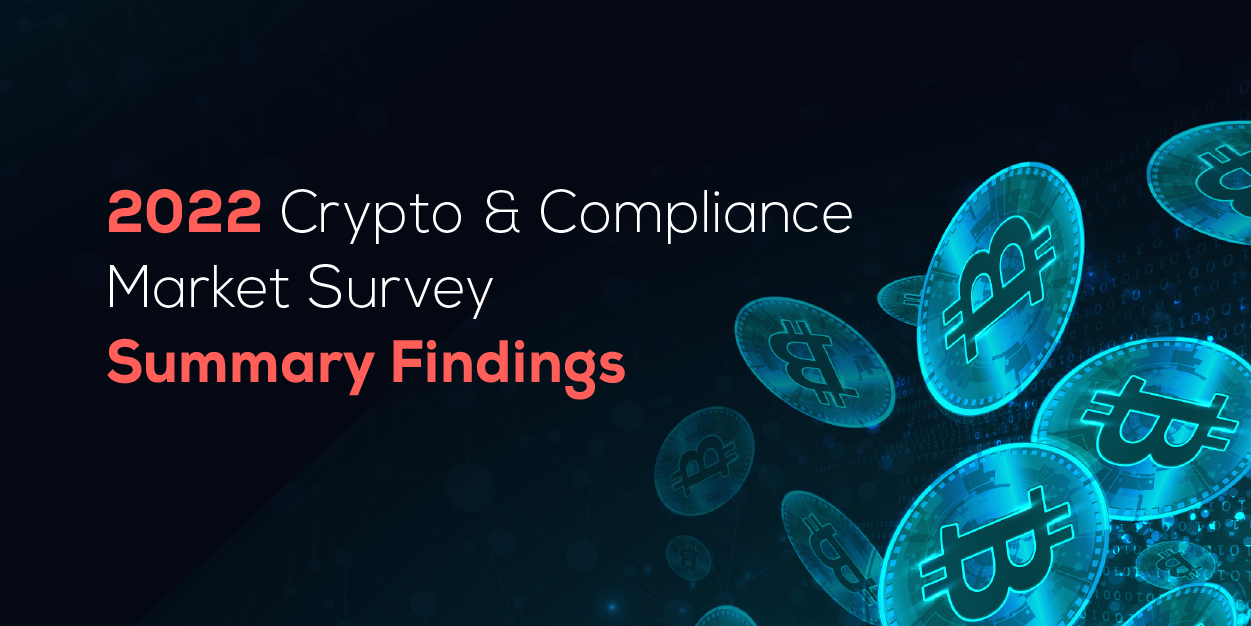For our second annual Crypto & Compliance Survey, we surveyed the marketplace to find out how firms are currently approaching employee crypto-trading compliance and how they plan to approach it. Here’s an overview of the results and some guidance on next steps your firm should take.
Regulatory scrutiny is on the rise for digital assets globally. As such, firms are becoming increasingly concerned they may be held liable for the crypto-trading activity of their employees. In the US, the Securities and Exchange Commission is attempting to lead the way in implementing regulatory reform in crypto markets. Here’s what SEC Chair Gary Gensler had to say on the matter of crypto-regulation in April of this year: “Amongst crypto-only exchanges, the top five platforms make up 99% of all trading … [and] many of the tokens trading on these platforms may well meet the definition of securities.”
So are crypto assets securities or aren’t they? That's the question, and it’s an important one for firms, as employees are required to report transactions and holdings in certain securities. For more guidance, it’s worth referring again to Gensler, who recently reiterated his clarification that some crypto assets “don't just resemble securities, they are securities.” Yet, ambiguity remains. So what should firms do to ensure compliance?
A good place to start such a discovery process is by looking at how firms are thinking about employee crypto-compliance right now. And a great place to do that is with our Second Annual Crypto & Compliance Survey. Following, then, are four important takeaways from said survey, with year-on-year analysis against the results from our 2021 survey. For a more in-depth look at this year’s Crypto & Compliance Survey, and even more in-depth analysis of the results, be sure to join us at Synergy ‘22 this fall in Washington, DC, London, or both.
1. FIRMS ARE ALREADY TAKING PRECAUTIONS
Across the total population of those surveyed YOY in both our 2022 and 2021 Crypto & Compliance Surveys, we found that 37% of firms have developed an employee crypto-trading policy. Of the respondents who have not yet implemented such a policy, 31% intend to do so in 2022. Of those that had established a crypto-trading policy, a common theme was that updates to the language of compliance processes had been made to incorporate digital assets, as with any other security transaction. There were also cases of firms requiring all digital assets to be pre-cleared, while others prohibited or limited the trading of these assets. This suggests that many firms have already taken precautions to help ensure they are ready for whatever comes next.
Interestingly, firm attitudes have stayed consistent from 2021 to 2022 around the monitoring of employee exposure to crypto assets. Most answers centered around following regulatory guidance and policies once regulation is officially put into effect. For firms with policies already in place, they will continue to treat these assets as any other traded security. In both years, these same firms expressed their commitment to continue monitoring the trading of digital assets, and will require employees to report these types of transactions.
It’s important to note that some firms are taking additional steps to protect against potentially conflicting activity, including looking to build systems that can receive files from online crypto exchanges and wallets, to better monitor employee investments in digital assets. This is a new development YOY: one that shows a deeper understanding of the world of crypto overall and the proactive approaches firms are taking to remain current and innovative in their problem solving.
2. THE SPOTLIGHT ON CRYPTO MEANS MORE AWARENESS
Year-over-year comparison shows that firms 'Not Confident" in understanding how employees are trading these instruments decreased by 13%, with respondents “Somewhat Confident” and higher increasing by 6% from 2021 to 2022. While the reasons for this change are likely a result of the heightened attention crypto is receiving from regulatory bodies and/or the improved awareness and education of crypto-trading and transactions work, more than 40% of those surveyed still lack confidence; this indicates there is still work to be done to improve the monitoring of employee crypto-trading activity.
3. CRYPTO TRADING HAS A NOTABLE GENERATION GAP
Firms also noted that Millennials (age range » 26-42) were the most common (63.93%) generational group trading crypto assets, with Baby Boomers (age range » 58-75) the lowest (0.82%). This is unsurprising; the phenomenon has been commonly researched. There are many reasons why crypto assets are popular among younger generations, with the first being they are new and emerging technologies, and older generations are simply more comfortable with traditional forms of finance.
Younger people also tend to be more familiar with and aware of digital assets in general, as technology has been omnipresent throughout their lives. It is also true that younger generations are more accustomed to making purchases of intangible items on their mobile devices through social media, in-game applications, and similar means. Finally, perhaps lacking the formal advice their parents had access to, in a world where everyone had a broker, it may be daunting for younger generations to invest in traditional assets, and therefore decide to invest in crypto: where they can rely on their own research.
Of those employees who invest in crypto assets, most firms estimate the amount to be less than 25% of their total tradable assets, which shows the adoption of crypto assets is still limited. This may suggest people are concerned about the potential volatility they might experience, especially given the recent decline in the value of major cryptocurrencies. Perhaps the most alarming result from the survey, however, was that nearly 40% of firms indicated they don’t know the percentage of their employees' tradable assets in crypto; this further suggests the level of confidence in understanding exactly how and how much employees are trading crypto assets remains an area for improvement.
4. DON’T DELAY GETTING A CRYPTO POLICY IN PLACE
On the whole, firms believe that crypto regulation will come into effect over the next 12-24 months, with a majority believing it will be implemented sooner rather than later. However, a small number of those surveyed believe there will be no official regulation anytime soon. Firms must be cautious with this kind of thinking. The last thing compliance ever ought to be doing is scrambling to get a policy up and running for a regulation that there was at least some warning of. Businesses regularly plan for eventualities that never come to be. Forewarned is forearmed, and in the case of crypto regulation there has been plenty of the former. And there are already best practices forming around employee crypto-compliance, as well as automated solutions that can make the job of monitoring employee crypto transactions and holdings far more easy and more accurate.




